An old trailer for Disney’s 1998 animated version of Mulan explores the tale of a woman who fights wars on her father’s behalf, as told by a dithery old man. Not once in this particular trailer does Mulan speak for herself. Opposite from that, the teaser which Disney have just released for their 2020 remake could not be more different.
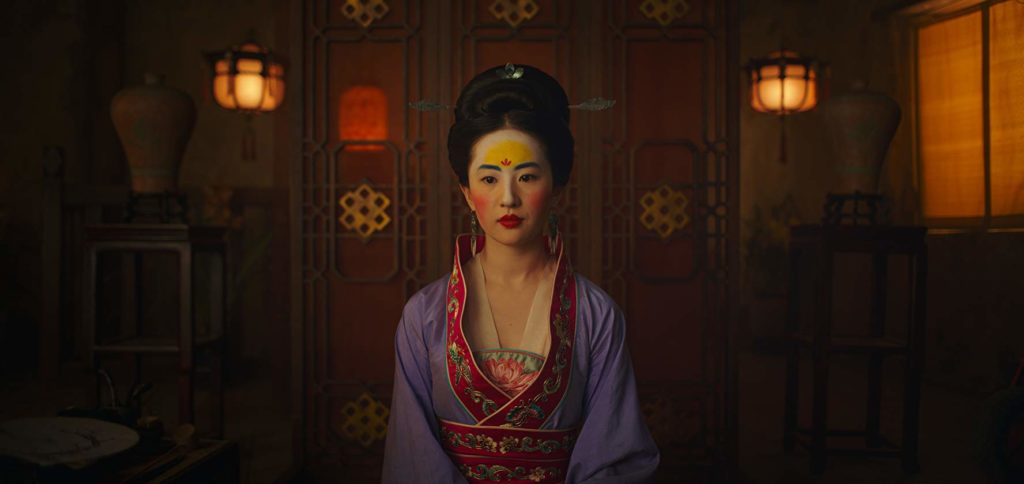
The new Mulan gets its reference to the much adored but flawed original out of the way early on, before asserting itself as a very different kind of movie. This is not the kind of fantastical fairytale re-imagination that has characterised Disney films for decades; This looks like full-blown action cinema, with mesmerising fight choreography and set pieces clearly influenced by Hong Kong martial arts cinema.
Such a dramatic swerve from the original initially irked certain fans, but just this year Dumbo proved how wonderful overhauls of beloved Disney stories can be. Conversely, The Lion King warns us how drab uninventive copies can feel. Mulan also has a reported budget of $290 million, which if accurate would make it the most expensive film ever helmed by a female director.
Mulan came towards the end of Disney’s ’90s renaissance. It is a Disney animated classic that, unlike some of its contemporaries, is in evident need of a refresh. Despite broader global success, one of the reasons the film flopped in China was because it was so removed from the source material, the legend of Hua Mulan. It also couldn’t have helped that Chinese filmmakers had already been adapting the story to the big screen for decades, starting with the silent film Hua Mulan Joins the Army (1927). As recently as 2009, Chinese studios have been adapting the story as they see fit. To date, there have been nine film adaptations of the story.
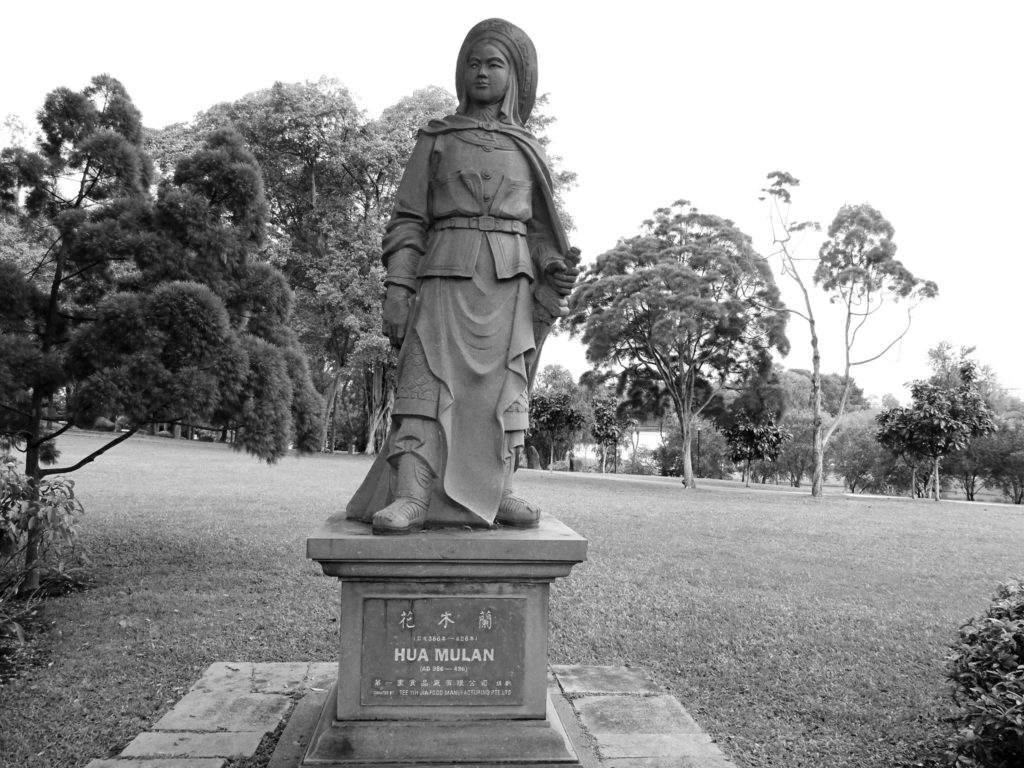
Part of the reason that Hua Mulan has remained a figure of Chinese folklore for centuries is the malleability of the story. In his book on the legend, Lan Dong states that the first known transcription of the story is a poem composed around the time of the Northern Dynasties. It describes how Mulan is a courageous daughter who stands in for her father during wartime, impersonating a man so she can fight in the army. She fights for years, and is offered a promotion into the official ranks, but turns it down so she can return home and resume her life as a woman and daughter. A lot of specifics – her life before and after the war, her fighting skills, her family – are never delved into. So much being left to the imagination is part of what has encouraged so many adaptations and interpretations.
Mulan (1998) was Disney’s first animation to feature a Chinese lead character, and stands as one of the most profitable Disney movies of the decade. Disney has pioneered the reinvention of folk tales and legends, but mainly those of a Western origin – think Cinderella (1950) or more recently Tangled (2010). Mulan is an exception. Despite that, yet another reason it fared badly in China is because it didn’t feel authentic or ‘Chinese’ enough. Instead, as Dong explores, it is very much a Western projection of China for predominantly Western viewers. It conforms to a romanticised image of what historical China looked like – it’s no accident that the film’s very first shot is of The Great Wall. To those living abroad, what says “China” more than its greatest landmark? Mulan is not an image of China, but an image of China as popularly imagined by mostly Western audiences and producers.
Disney attempted to make the story of Mulan more universally appealing, but in doing so lost the uniqueness and sense of locality that made the legend. Point in case: Mushu, the miniature red dragon voiced by Eddie Murphy who guides and protects Mulan on her quest. He is a glaring omission from the reboot, much to the initial disdain of some fans. In China however, he has never been an overwhelmingly popular figure. One Weibo user says that Chinese fans care less about Mushu and care more “about whether Hua Mulan looks charming and whether the film accurately reflects Chinese culture and Mulan’s perseverance.” Even his name – Mushu – is taken from a Chinese-American hybrid dish, so hardly a representation of rich Chinese historicity. Mushu is also another example of standard iconography – put simply, Mushu is a small red dragon, so of course he is from China! It’s unsurprising that Mushu is singled out as a point of criticism, an example of an element that takes away from the meaningful sincerity of the original story.
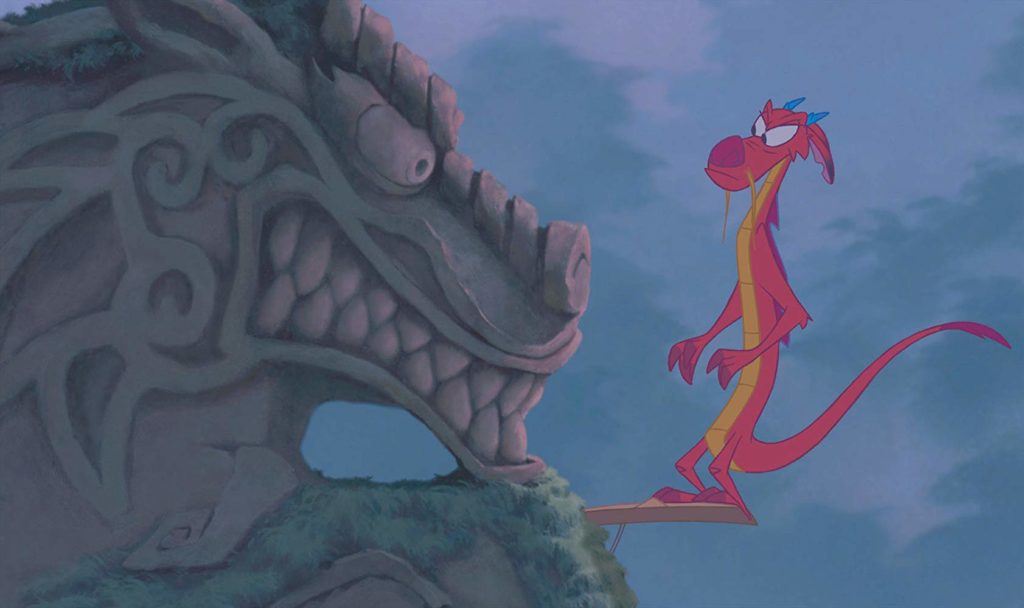
Disney’s interest in Asia, which Mulan provides a key example of, is unmistakably commercial. Disney knows that the Far East is an increasingly lucrative market, but in their attempts to capitalise on it, many non-Western audiences are left craving something that isn’t viewed through dollar sign eyes. Mimi Nguyen argues that such Americanised representation has consequences for how Asians and Asian-Americans could feel validated by movies like Mulan. As she puts it, “are we only “real” if we’re imprinted on Hollywood celluloid? Should we be grateful? Are Asian Americans finally vindicated, and of what? Why should we be so desperate for mainstream recognition in 35 mm to be mirrored in the box office figures and merchandise sales?”
Feminist critiques of the original may also have filtered into how the new version has been imagined. Mulan diverges heavily from the standard princess storyline, not interested in love but only in her family and doing what is right. As an empowering role model, Mulan (on the surface) seems light years ahead of other Disney princesses like Snow White or Ariel – making the fact that she is still classified as one a bit of a smack to the mouth. To this day, Mulan offers a fascinating portrait of how gender and socio-political roles are effectively performed, and the hierarchies in which these performances reside. It is the transgression of these roles that characterises the hero throughout her journey, something which goes back to the original legend. She rises above what women and ‘good wives’ were expected to do, in order to fulfil her own ambitions and to protect her family, a duty ordinarily reserved for men.
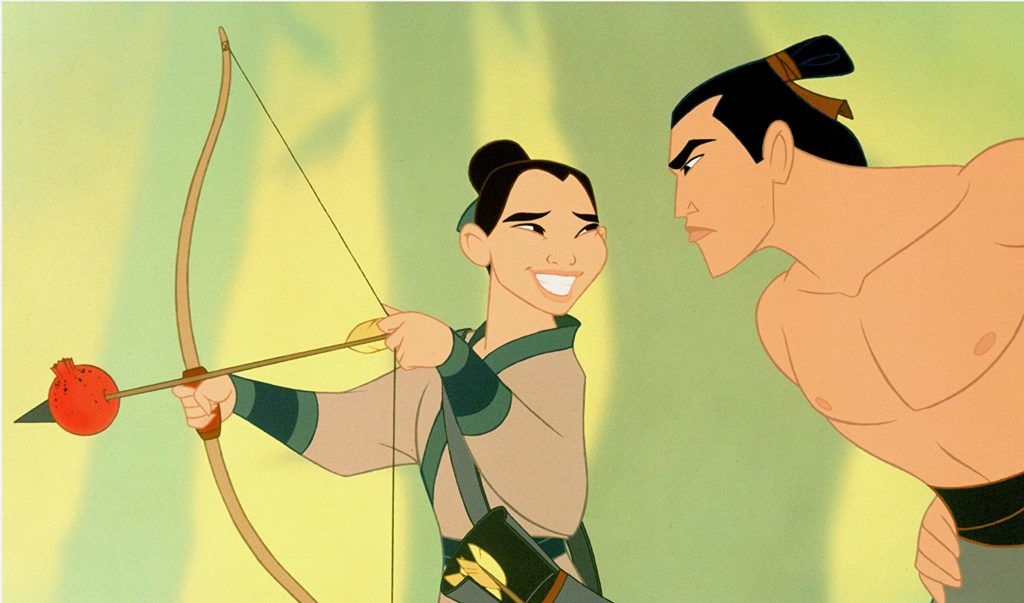
However, Mulan could also be accused of pseudo or fake feminism. Kathleen Karlyn, an assistant professor of English at the University of Oregon, points out that “in order to even imagine female heroism, we’re placing it in the realm of fantasy.” Mulan only achieves a position of power through becoming a man, and indeed the whole story is based on a legend that would have originally been penned by male writers. While at the end of Mulan she defeats her nemesis as a woman (a divergence from the original Ballad, where her identity is concealed until the end), she only gets there by first presenting as male. At the end, she returns home to her old life as a daughter and, with the appearance of General Li Shang at her door, a future wife. To Lan Dong, Grandmother Fa’s humorous final line to Li Shang “would you like to stay forever!?” confirms the end of Mulan’s warrior story, and a resuming of the life plan previously mapped out for her. Such a journey reinforces gender hierarchy, rather than upturning it.
Changing the legend to resolve this scenario is not an innocent solution, however. An American corporation completely changing a foreign legend so it fits better with their societal ideals smacks of colonial appropriation. It would negate the voice of those historically marginalised by imperial history, when the legend of Hua Mulan should have the potential to do the exact opposite. Nobody can really argue that Disney are not allowed any creative license whatsoever, but over what and to what extent is a troublesome issue that dogs the animated original.
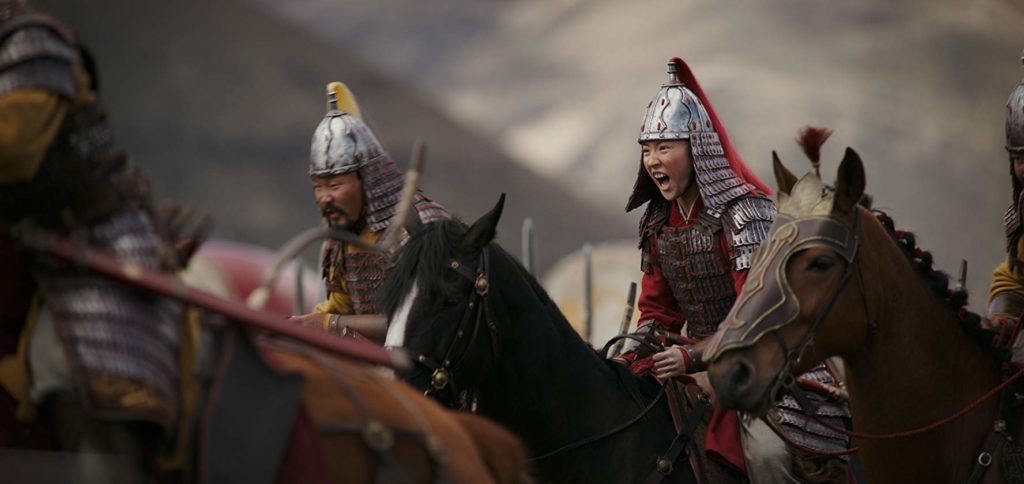
It is here that the new Mulan comes in. It is of course still an American adaptation of a Chinese story, and there is only so much we can gather from a single teaser trailer, but immediately there appears to be differences. Director Niki Caro seems to have turned the story into a martial-arts style war movie that sees Mulan much more actively engaged in close combat, at one point relinquishing her male disguise in the process. Gone are the songs and caricature, in comes a story that has the potential to do much greater justice to the legend that Chinese audiences want to see brought to life. The Chinese social media site Weibo conducted a poll of 115,000 users and according to Sixth Tone, they found that most are “satisfied” with Mulan’s appearance in the trailer.
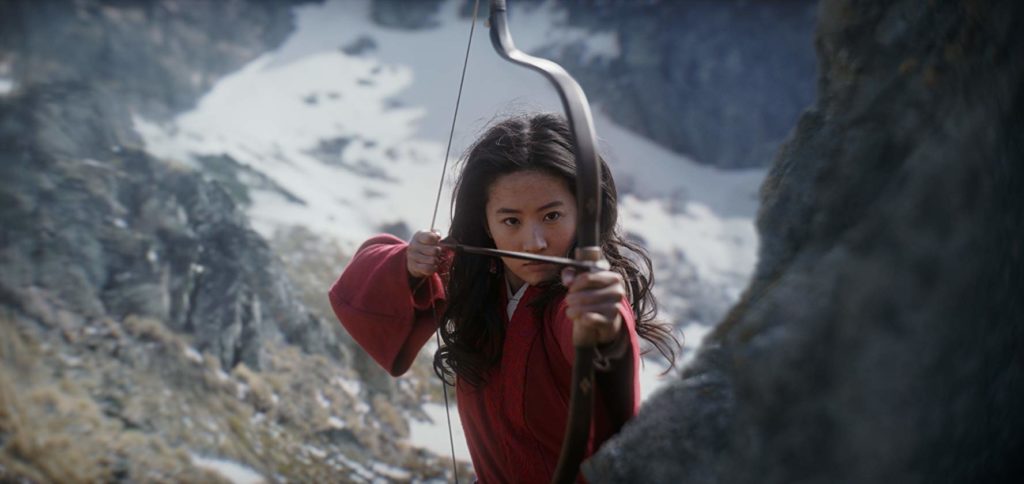
Other individual reactions on social media have also been more enthusiastic. One Weibo user wrote that “this is the real Hua Mulan!! … After seeing faces obscured by beauty filters for so many years, I thought I could only accept perfect looks. But after watching the trailer, I was reminded that Mulan is going to war like men; it’s only right she doesn’t wear makeup.” Meanwhile, one Twitter user has appealed for authenticity to the story, pointing out that “Mulan is not just a Disney princess, she’s a great heroine in [an] ancient Chinese legend.” This apparent realism, if faithfully employed, promises to right the wrongs of the original film. That’s not to say Disney have obviously got it all right – others have pointed out what are obvious geographical errors – but the initial signs of progress are encouraging.
There are other things that Disney can do to shake up the movie. The original villain, Shan-Yu, should have been up there with Scar when it comes to the best Disney villains, and he certainly looks and sounds the part. Instead, he is largely a waste of the late Miguel Ferrer’s talents, boringly bent on destruction for the sake of being evil. He goes by a different name this time around – Bori Khan – but he is effectively the same bad guy, though he is now motivated by revenge for his father’s death. That puts him on broadly the same kind of honour-driven trajectory as Mulan, which on paper promises to make him more interesting. There also seems to be no Li Shang, and Mulan’s love interest will reportedly be Chen Honghui, a soldier played by Yoson An (it will be very interesting to see how Caro approaches this). Finally, the Matchmaker, portrayed this time around by Pei-Pei Cheng, this time side-steps the tired trope of the overweight older woman – thankfully. These are just some of the things that have been changed, aside from turning Mulan into a sweeping war epic, and is very encouraging for anyone wanting to see Disney take a creative gamble for the better.
The Disney goliath doesn’t look like stopping. This is a corporation who now revels in a near dictatorial grip on the global movie industry, a status they have carved out over the space of a century. Their quest has been guided by creativity and profit, which don’t always pull in the same direction. The character of Mulan balances at the crossroads of this tension; on the one hand is the need to respect an ancient legend, and telling the story in such a way that rings true with Chinese cinemagoers. On the other, there is the desire to universalise the story so that it makes money across the world. The original animation, with the benefit of hindsight, did not strike the balance well. It remains an interesting curiosity, but the update looks like the best shot Disney has had at reinventing a classic for the better. We can only hope that they get it right.
